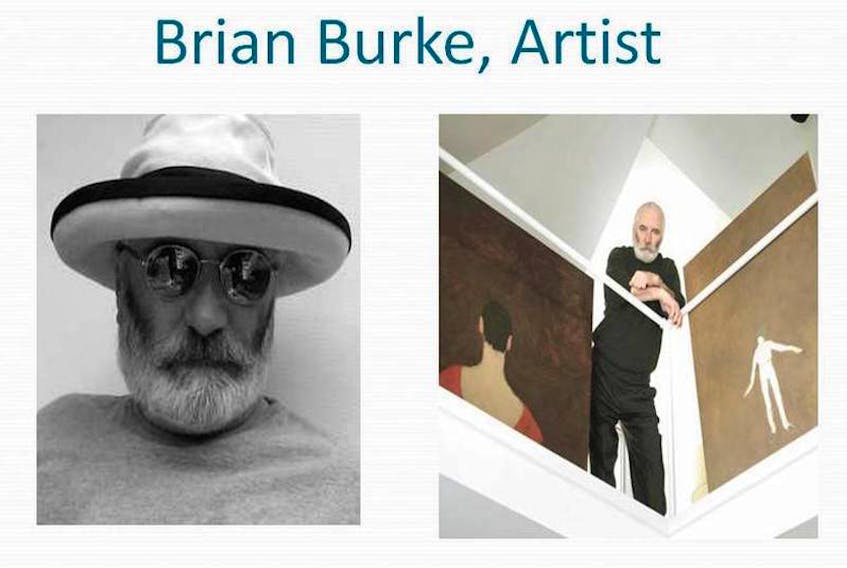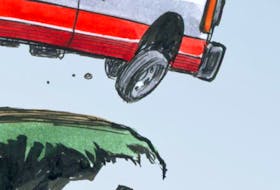BY TERRY GRAFF
GUEST OPINION
I first met Brian Burke in the 1980s when I was a member of a jury purchasing art in the Atlantic region for the Canada Council Art Bank. His work immediately stood out from the more conventional landscape painting that largely defined or dominated the visual arts scene in P.E.I. back then. I think we purchased two of Brian’s paintings then.
Sometime later I was a member of another Canada Council jury, this time recruited to assess artists’ grant applications from across the country. Brian’s application stood out from the others because it was printed by hand in pencil and was the most concise to-the-point application I had ever encountered. He simply stated that he was applying for funds so that he could paint. This was classic Brian! Although my colleagues on the jury were quick to reject his application at first sight, I was able to convince them that it was the quality of the work that we needed to attend to, not the words on paper. So we looked at Brian’s slides and the vote ended up being unanimous. Brian got the grant.
I recall fondly my visits to see Brian in the 1990s when I was director and chief curator of the Confederation Centre Art Gallery. At that time he and the brilliant performance artist Judith Scherer lived in Dalvay-by-the-Sea, which is located in the Prince Edward Island National Park.
I thought it odd, but he would ask me to bring a loaf of white bread with me from Charlottetown. He preferred white bread to whole wheat.
Brian worked in a separate studio building next to his and Judith’s house. It was filled with paintings, some at various stages of completion. An intuitive painter, he improvised much like a jazz musician who responds to the rhythm and life of the music as it develops. He was, in fact, a jazz drummer and would let me play on his trap set (I was in a rock band in my youth), which was set up in his studio. I remember booking Brian’s band to play at various opening receptions for exhibitions that I organized for the Confederation Centre Art Gallery.
I have long admired Brian’s figurative paintings, which are both beautiful and dark. Burke was a genius at capturing psychological states of being through minimal means. Using thin washes of smoky colour, he created stark vignettes of brooding isolation, estrangement, and loneliness. I always wondered where these images came from, if they derived from a troubled past and the dark realms of his psyche, or if they were a response to the experiential space of Prince Edward Island in their evocation of insularity, isolation, and detachment.
In 1996, I had the special privilege of curating a major exhibition of his work called “Mister Man: Paintings by Brian Burke.” It consisted of 21 paintings that focused on unmasking masculine identity and the symbolic structures and rituals that define it. My essay for the accompanying catalogue came out of the stimulating conversation I had with Brian during my visits to his studio. He encouraged my curatorial interpretation of his paintings, which I saw as a very powerful psychodrama about the male crisis. Reflecting on the meaning of this particular body of work today, that is, in light of the current swirl of sexual misconduct allegations in the news these days, the Mister Man series remains highly relevant. But in addition to its resonating content, Brian’s work is just great painting.
Brian was one of the most extraordinary artists to have come out of P.E.I., and I thank him and Judith for their friendship, good humour, and support they gave me during my days in P.E.I. in the 1990s.
- Terry Graff is former director and chief curator of the Confederation Centre Art Gallery.









